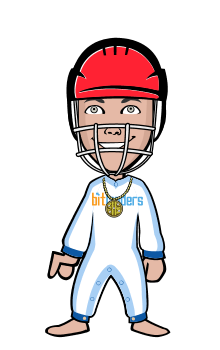Computer science is the scientific and practical approach to computation and its applications. It is the systematic study of the feasibility, structure, expression, and mechanization of the methodical procedures (or algorithms) that underlie the acquisition, representation, processing, storage, communication of, and access to information. An alternate, more succinct definition of computer science is the study of automating algorithmic processes that scale. A computer scientist specializes in the theory of computation and the design of computational systems.
Its fields can be divided into a variety of theoretical and practical disciplines. Some fields, such as computational complexity theory (which explores the fundamental properties of computational and intractable problems), are highly abstract, while fields such as computer graphics emphasize real-world visual applications. Still other fields focus on challenges in implementing computation. For example, programming language theory considers various approaches to the description of computation, while the study of computer programming itself investigates various aspects of the use of programming language andcomplex systems. Human–computer interaction considers the challenges in making computers and computations useful, usable, and universally accessible to humans.
The earliest foundations of what would become computer science predate the invention of the modern digital computer. Machines for calculating fixed numerical tasks such as the abacus have existed since antiquity, aiding in computations such as multiplication and division. Further,algorithms for performing computations have existed since antiquity, even before the development of sophisticated computing equipment. The ancient Sanskrit treatise Shulba Sutras, or "Rules of the Chord", is a book of algorithms written in 800 BC for constructing geometric objects like altars using a peg and chord, an early precursor of the modern field of computational geometry.
Blaise Pascal designed and constructed the first working mechanical calculator, Pascal's calculator, in 1642. In 1673, Gottfried Leibnizdemonstrated a digital mechanical calculator, called the Stepped Reckoner.He may be considered the first computer scientist and information theorist, for, among other reasons, documenting the binary number system. In 1820, Thomas de Colmar launched the mechanical calculatorindustry[note 1] when he released his simplified arithmometer, which was the first calculating machine strong enough and reliable enough to be used daily in an office environment. Charles Babbage started the design of the first automatic mechanical calculator, his Difference Engine, in 1822, which eventually gave him the idea of the first programmable mechanical calculator, his Analytical Engine. He started developing this machine in 1834 and "in less than two years he had sketched out many of the salient features of the modern computer". "A crucial step was the adoption of a punched card system derived from the Jacquard loom" making it infinitely programmable.[note 2] In 1843, during the translation of a French article on the Analytical Engine, Ada Lovelace wrote, in one of the many notes she included, an algorithm to compute the Bernoulli numbers, which is considered to be the first computer program. Around 1885, Herman Hollerith invented the tabulator, which used punched cards to process statistical information; eventually his company became part of IBM. In 1937, one hundred years after Babbage's impossible dream, Howard Aiken convinced IBM, which was making all kinds of punched card equipment and was also in the calculator business to develop his giant programmable calculator, the ASCC/Harvard Mark I, based on Babbage's Analytical Engine, which itself used cards and a central computing unit. When the machine was finished, some hailed it as "Babbage's dream come true".
During the 1940s, as new and more powerful computing machines were developed, the term computer came to refer to the machines rather than their human predecessors.[9] As it became clear that computers could be used for more than just mathematical calculations, the field of computer science broadened to study computation in general. Computer science began to be established as a distinct academic discipline in the 1950s and early 1960s. The world's first computer science degree program, the Cambridge Diploma in Computer Science, began at the University of Cambridge Computer Laboratory in 1953. The first computer science degree program in the United States was formed at Purdue University in 1962. Since practical computers became available, many applications of computing have become distinct areas of study in their own rights.
Although many initially believed it was impossible that computers themselves could actually be a scientific field of study, in the late fifties it gradually became accepted among the greater academic population.It is the now well-known IBM brand that formed part of the computer science revolution during this time. IBM (short for International Business Machines) released the IBM 704 and later the IBM 709[computers, which were widely used during the exploration period of such devices. "Still, working with the IBM [computer] was frustrating […] if you had misplaced as much as one letter in one instruction, the program would crash, and you would have to start the whole process over again". During the late 1950s, the computer science discipline was very much in its developmental stages, and such issues were commonplace.
Time has seen significant improvements in the usability and effectiveness of computing technology.Modern society has seen a significant shift in the users of computer technology, from usage only by experts and professionals, to a near-ubiquitous user base. Initially, computers were quite costly, and some degree of human aid was needed for efficient use—in part from professional computer operators. As computer adoption became more widespread and affordable, less human assistance was needed for common usage.



